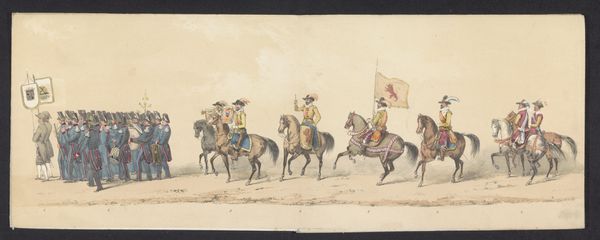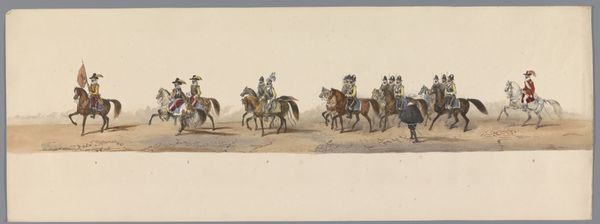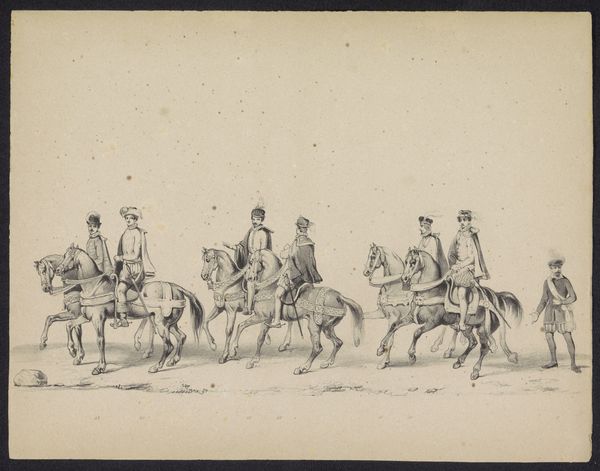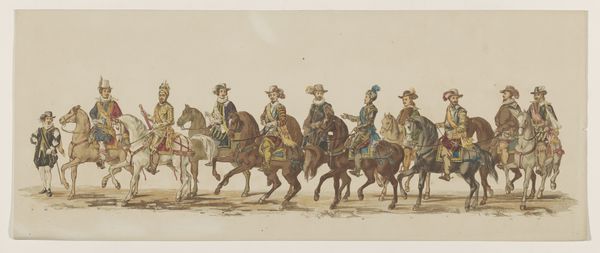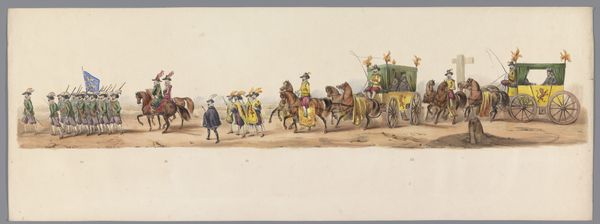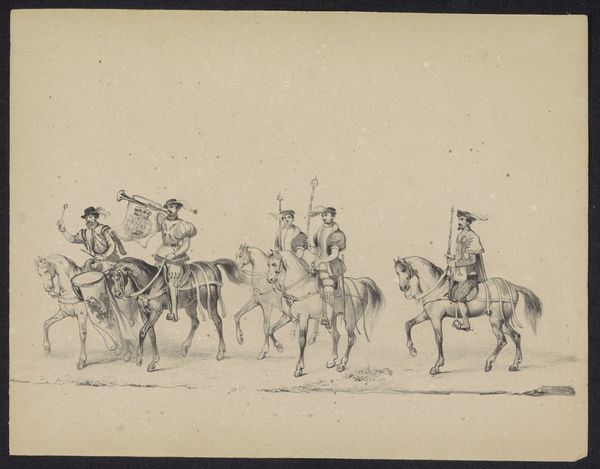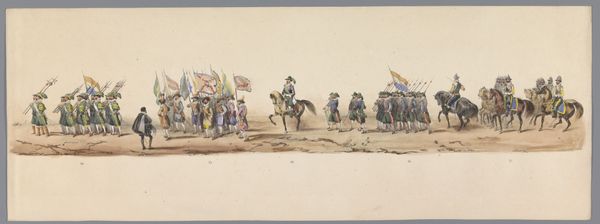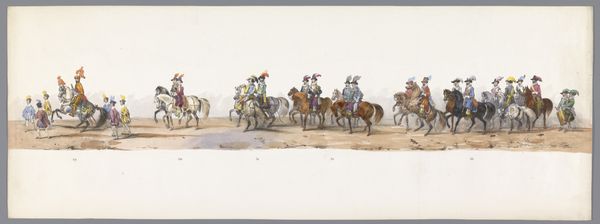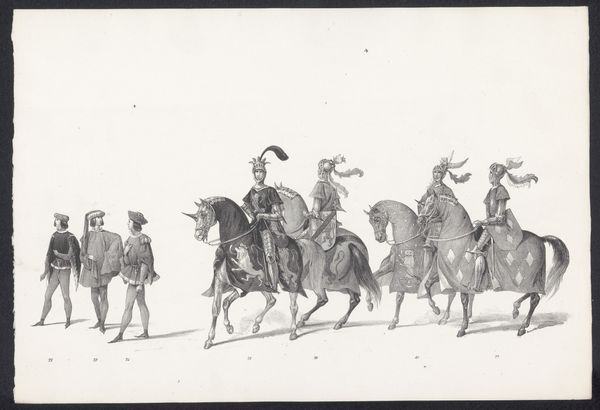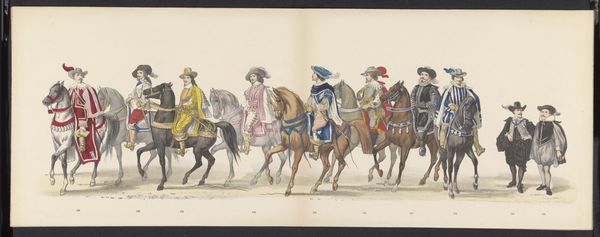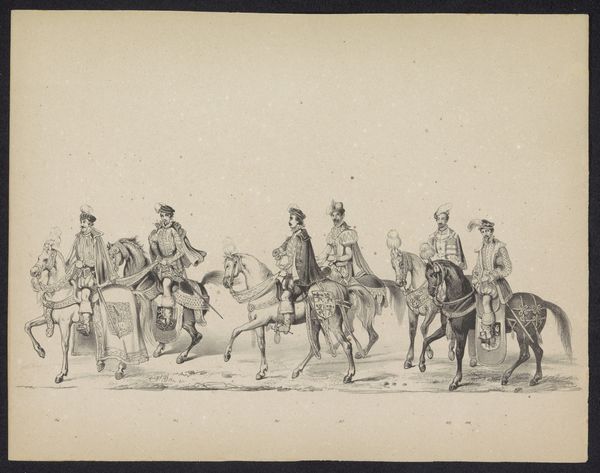
Historische optocht bij het tweede eeuwfeest van de Utrechtse Hogeschool, 1836 (plaat 5) 1837
0:00
0:00
drawing, watercolor
#
drawing
#
landscape
#
watercolor
#
academic-art
Dimensions: height 235 mm, width 315 mm
Copyright: Rijks Museum: Open Domain
Curator: Victor Adam completed this watercolor drawing titled 'Historische optocht bij het tweede eeuwfeest van de Utrechtse Hogeschool, 1836 (plaat 5)' in 1837. It currently resides at the Rijksmuseum. What are your initial impressions? Editor: I'm immediately struck by the rather subdued palette and horizontal composition, emphasizing a sense of procession, almost ritual. The artist certainly prioritized a formal presentation. Curator: Yes, it depicts a historical procession celebrating the Utrecht University's bicentennial. Looking at the materials, we see delicate washes of watercolor on paper, common for preparatory sketches or illustrations intended for a wider, perhaps printed, distribution. It's fascinating how art was produced and consumed during such academic commemorations. Editor: Notice how each rider has been rendered. Adam meticulously illustrates their distinctive apparel. From a semiotic viewpoint, each garment contributes to the encoding of class and importance inside this staged historical reenactment. The composition guides us across, a formal display indeed. Curator: The scale is equally important. As a relatively small, reproducible artwork, it points towards how the university disseminated images and solidified its identity via these accessible depictions of its own history. Also consider the labor. Was it Adam alone producing these, or did assistants play a role in fulfilling commissions? Editor: Agreed. It would be fascinating to deconstruct the aesthetic intention behind presenting these figures in this procession with precise postures and color use. Do the washes of muted colours mean something symbolically, maybe linked to classical modes of illustration that lend seriousness to the event? Curator: Exactly! Understanding its position within the university's promotional strategies, and its role in academic visual culture, provides profound insights into 19th-century society and how academic institutions presented themselves. It really shows how closely art-making was tied to the needs and identity of the Dutch establishment. Editor: Yes, indeed, even within the apparent formalism and linear presentation of the procession we have, buried beneath those figures, a host of important narratives of manufacture, societal use, as well as visual design, that the artwork's semiotics reveal upon closer examination.
Comments
No comments
Be the first to comment and join the conversation on the ultimate creative platform.
